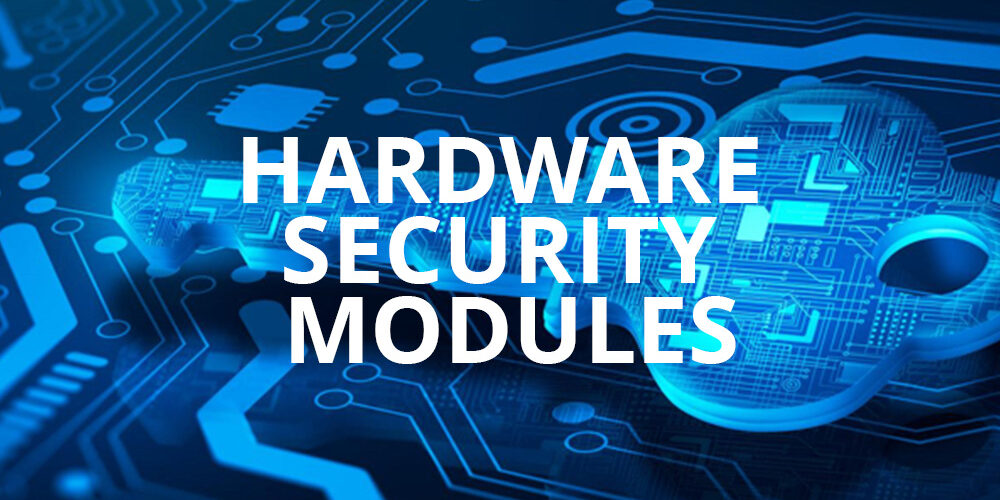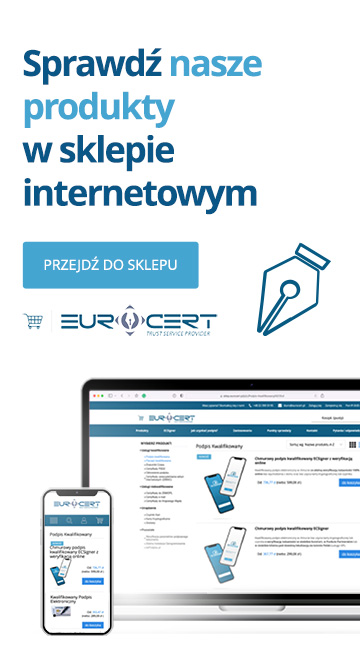Karta kryptograficzna i czytnik to zestaw, które zwiększy bezpieczeństwo składania podpisu elektronicznego. Poznaj potencjał zastosowania tego zestawu. W tym artykule zebraliśmy dla Ciebie kluczowe informacje na ich temat. Dowiesz się, czym są karta i czytnik kart kryptograficznych, jak działa taki zestaw oraz jakie produkty są rekomendowane przez branżowych ekspertów.
Czym jest karta kryptograficzna?
Zgodnie z prostą definicją karta kryptograficzna to urządzenie, które wykorzystywane jest w celu zabezpieczenia e-podpisu. Karta tego typu występuje w zestawie z czytnikiem. Zapisywane są na niej poufne dane niezbędne do tego, aby właściciel złożył podpis elektroniczny lub wykonał inną czynność wymagającą weryfikacji. Urządzenie projektowane jest w ten sposób, aby zapewniało wysoki poziom zabezpieczeń poprzez m.in.: szyfrowanie danych i generowanie indywidualnych kluczy kryptograficznych.
Karty kryptograficzne wykorzystuje się m.in. w takich obszarach jak:
- kwalifikowany podpis elektroniczny,
- kwalifikowana pieczęć elektroniczna,
- elektroniczne dowody tożsamości,
- transport publiczny,
- płatności i mikropłatności,
- paszporty elektroniczne,
- dostępy fizyczne i logiczne,
- przekazywanie innych poufnych danych.
Podstawowe formaty i rodzaje karty kryptograficznych to:
- Smart Card – przypomina tradycyjną kartę bankomatową,
- Token USB – karta podłączana do komputera lub innego urządzenia za pomocą portu USB,
- karty PCI i PCIe – są montowane bezpośrednio w komputerach lub serwerach,
- karty HSM – zapewniają najwyższy standard bezpieczeństwa, mogą mieć postać wewnętrznych kart lub zewnętrznych modułów.
Ponadto w kategorii kart kryptograficznych Smart Card dostępnych w formacie ISO/IEC 7816 znajdują się również urządzenia bezstykowe. Ich działanie opiera się na technologii NFC. Dzięki temu wystarczy zbliżyć kartę do czytnika i komunikacja zostanie nawiązana dzięki falom radiowym. W ten sposób nastąpi przesył danych.
Jednym z najpopularniejszych modeli używanych na rynku jest Karta Gemalto IDPrime 930nc. To karta stykowa obsługująca technologie PKI oraz OTP. Przeznaczona jest do stosowania w aplikacji Źródło, Centralnego Rejestru Wyborców oraz podczas logowania do systemów Pobyt v.2 oraz do klasycznego zastosowania dla kwalifikowanego podpisu elektronicznego.
Drugim popularnym modelem jest karta kryptograficzną jest ATOS CardOS v5.3. Dostępna jest w wersji stykowej i bezstykowej w formatach karty dużej lub karty SIM. Model ten spełnia najwyższe standardy bezpieczeństwa i obsługuje takie rozwiązania, jak m.in.: RSA 4096, SHA 256 czy AES 256.
Czytnik kart kryptograficznych – czym jest?
Czytnik kart kryptograficznych to niewielkie urządzenie elektroniczne, które służy do odczytywania informacji zawartych na kartach kryptograficznych. Czytnik w bezpieczny i szyfrowany sposób pobiera informacje z nośnika danych, które są zabezpieczone kluczem kryptograficznym. Tego typu rozwiązanie stosuje się m.in. w: systemach bezpieczeństwa, systemach uwierzytelniania, systemach kontroli dostępu czy też w ramach podpisu elektronicznego. W dużym skrócie urządzenie to pełni rolę pośrednika pomiędzy komputerem a kartą, umożliwiając przesyłanie danych.
Podstawowe typy czytników
Obecnie wyróżnia się kilka podstawowych rodzajów czytników kart kryptograficznych. Różnią się konstrukcją, funkcjonalnością oraz potencjałem zastosowania. Należą do nich m.in.:
- zestawy bezprzewodowe,
- zestawy przewodowe,
- zestawy stykowe – wymagają umieszczenia karty kryptograficznej,
- zestawy bezstykowe (zbliżeniowe) – ich działanie opiera się na technologii bezprzewodowej RFID lub NFC,
- zestawy hybrydowe (stykowe i bezstykowe w jednym),
- zestawy na USB (czytniki USB, pendrive’y),
- zestawy wbudowane w urządzenie.
Jednym z najpopularniejszych czytników na rynku jest FEITIAN R301-B9 USB Smart Card Reader w postaci urządzenia USB. Obsługuje karty SIM i jest zgodny ze standardami PC/SC oraz CCID. Zapewnia efektywne odczytywanie danych przy zachowaniu wysokiego poziomu zabezpieczeń.
Drugim z chętnie wybieranych czytników jest Gemalto IDBridge CT30. To model przewodowy w postaci czytnika USB kart procesorowych. Można stosować go z różnego rodzaju kartami stykowymi. Doskonale sprawdza się przede wszystkim podczas pracy przy komputerze stacjonarnym, np. w urzędzie lub w sektorze bankowości. Idealnie sprawdza się z wcześniej wspomnianym modelem karty 930nc.
Jak działa karta kryptograficzna z czytnikiem?
Zasada działania zestawu karty z czytnikiem kart kryptograficznych jest relatywnie prosta. Użytkownik umieszcza kartę w czytniku stykowym lub przykłada ją do czytnika bezstykowego. W tym momencie nawiązywane jest połączenie. Po nawiązaniu połączenia należy przejść przez proces autoryzacji dostępu do karty (wpisanie kodu PIN). Po pozytywnej autoryzacji można przejść do wykonania wybranej operacji kryptograficznej. Umożliwiają to dane zapisane w mikroprocesorze karty. Po wykonaniu danej czynności następuje uwierzytelnianie użytkownika, a także szyfrowanie i deszyfrowanie danych z użyciem kluczy kryptograficznych znajdujących się w urządzeniu. Na samym końcu następuje ostateczne przetworzenie i potwierdzenie czynności (np. podpisu kwalifikowanego).
Najczęściej zestaw karty i czytnika wykorzystywany jest do składania podpisu kwalifikowanego w celu uwierzytelnienia użytkownika. Dotyczy to m.in. logowania do systemów elektronicznych czy też składania dokumentów urzędowych. Ponadto karty kryptograficzne wykorzystywane są m.in. w płatnościach zbliżeniowych (technologia NFC), systemach kontroli dostępu (np. do zagrożonych stref), w biletach elektronicznych itd. Wciąż jednak w Polsce najczęściej stosuje się je w ramach podpisu kwalifikowanego.
Czym kierować się przy wyborze czytnika i karty kryptograficznej?
Standardowo czytnik i karta kryptograficzna stanowią zestaw. Oczywiście jego wybór ma znaczenie. Należy dokonać rzetelnej analizy dostępnych na rynku produktów. Pod uwagę należy wziąć m.in. ich zgodność z obowiązującymi przepisami i standardami bezpieczeństwa ISO. Wszystko po to, aby zapewnić sobie najwyższy poziom zabezpieczeń.
Kolejnym ważnym aspektem jest wspieranie karty kryptograficznej. Poszczególne modele różnią się wspieranymi algorytmami kryptograficznymi i szyfrującymi. Należy dostosować to do swoich potrzeb i wymagań w danym środowisku pracy. Najczęściej wybierane są modele czytników zasilanych z USB. To bezpieczny wybór. Alternatywą są innowacyjne modele zasilane m.in. przez pole elektromagnetyczne lub starsze rozwiązania zasilane bateryjnie. W przypadku czytników zasilanych z USB warto zaopatrzyć się od razu w przejściówkę USB-C, ponieważ większość urządzeń zawiera starszy typ łącza USB 2.0.
Oczywiście dostępne zestawy różnią się ceną. Warto wybierać produkty dostosowane do swoich możliwości finansowych oraz planowanego budżetu. Dobrej jakości czytniki można kupić już w okolicach 100-120 złotych. Ceny karty kryptograficznych oscylują w granicach 100-200 złotych. Za tą cenę można kupić modele, które spełniają najwyższe rynkowe standardy w zakresie jakości wykonania oraz poziomu zabezpieczeń, oraz są zgodne z normą ISO. W przypadku jakichkolwiek wątpliwości przy zakupie warto skonsultować się z branżowym ekspertem.
Czytnik i karta kryptograficzna – podsumowanie
Zestaw czytnika i karty kryptograficznej to rozwiązanie, które umożliwia składanie podpisu kwalifikowanego w bezpieczny i kontrolowany sposób. To klucz do tego, aby zadbać o poufność swoich danych i zabezpieczyć je przed kradzieżą informacji. Na rynku dostępne są różne rodzaje kart i czytników, które należy dopasować bezpośrednio do swoich potrzeb oraz danego zastosowania. Rekomendujemy wybór produktów renomowanych producentów, w tym m.in. Gemalto, ATOS czy FEITIAN.






